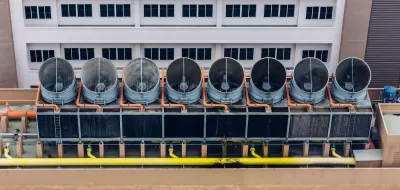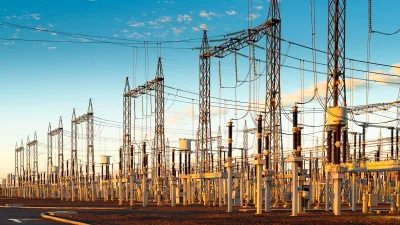In-house data centers owned by several major tech companies likely produce over six times as many greenhouse gas emissions as their owners estimate.

Data centers owned by major tech companies emit significantly more greenhouse gases than the sector admits, reports Isabel O’Brien in The Guardian. “According to a Guardian analysis, from 2020 to 2022 the real emissions from the ‘in-house’ or company-owned data centers of Google, Microsoft, Meta and Apple are likely about 662% – or 7.62 times – higher than officially reported.”
As early as 2022, before the explosion of AI tools like ChatGPT, data centers accounted for 1 percent to 1.5 percent of global electricity consumption. “According to Goldman Sachs, a ChatGPT query needs nearly 10 times as much electricity to process as a Google search, and data center power demand will grow 160% by 2030.”
While some companies say they are ‘carbon neutral,’ experts call this a ‘creative accounting’ strategy. “Amazon – despite all the PR and propaganda that you’re seeing about their solar farms, about their electric vans – is expanding its fossil fuel use, whether it’s in data centers or whether it’s in diesel trucks,” said a representative of Amazon Employees for Climate Justice.
O’Brien warns, “Even though big tech hides these emissions, they are due to keep rising. Data centers’ electricity demand is projected to double by 2030 due to the additional load that artificial intelligence poses, according to the Electric Power Research Institute.”
FULL STORY: Data center emissions probably 662% higher than big tech claims. Can it keep up the ruse?

Study: Maui’s Plan to Convert Vacation Rentals to Long-Term Housing Could Cause Nearly $1 Billion Economic Loss
The plan would reduce visitor accommodation by 25,% resulting in 1,900 jobs lost.

North Texas Transit Leaders Tout Benefits of TOD for Growing Region
At a summit focused on transit-oriented development, policymakers discussed how North Texas’ expanded light rail system can serve as a tool for economic growth.

Using Old Oil and Gas Wells for Green Energy Storage
Penn State researchers have found that repurposing abandoned oil and gas wells for geothermal-assisted compressed-air energy storage can boost efficiency, reduce environmental risks, and support clean energy and job transitions.

Santa Barbara Could Build Housing on County Land
County supervisors moved forward a proposal to build workforce housing on two county-owned parcels.

San Mateo Formally Opposes Freeway Project
The city council will send a letter to Caltrans urging the agency to reconsider a plan to expand the 101 through the city of San Mateo.

A Bronx Community Fights to Have its Voice Heard
After organizing and giving input for decades, the community around the Kingsbridge Armory might actually see it redeveloped — and they want to continue to have a say in how it goes.
Urban Design for Planners 1: Software Tools
This six-course series explores essential urban design concepts using open source software and equips planners with the tools they need to participate fully in the urban design process.
Planning for Universal Design
Learn the tools for implementing Universal Design in planning regulations.
Ascent Environmental
Borough of Carlisle
Institute for Housing and Urban Development Studies (IHS)
City of Grandview
Harvard GSD Executive Education
Toledo-Lucas County Plan Commissions
Salt Lake City
NYU Wagner Graduate School of Public Service





























